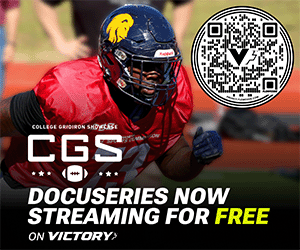Teams are constantly seeking ways to enhance their collaborative efforts and boost efficiency without sacrificing the spark of ingenuity. As the demands for high-quality artistic output intensify, digital solutions have emerged as invaluable allies in the quest for seamless teamwork and effective project management.
The Evolution of Collaboration Platforms in Imaginative Spaces
The journey from traditional brainstorming sessions to computerized synergy has been transformative. Modern workflow enhancers, such as the versatile xTilesApp, have revolutionized how inventive teams interact, share ideas, and manage projects. These digital platforms offer a virtual workspace where originality can flourish unhindered by physical limitations or organizational barriers.
Optimization of the Inventive Process
Digital collaboration solutions play a crucial role in optimizing various aspects of the creative process. Here’s how:
Brainstorming and Ideation: Virtual Whiteboards for real-time collaborative conceptualization, Mind Mapping interfaces to visualize complex notions, and Inspirational Boards for mood and style references.
Project Tracking: Kanban Boards for visualizing workflow stages, Time Tracking features to manage deadlines, Task Assignment, and Prioritization Mechanisms.
Feedback and Iteration: In-context Commenting on design drafts, Version Control for tracking changes, and Approval Workflows to streamline decision-making.
The Impact on Team Dynamics
The integration of digital collaboration platforms has significantly altered team dynamics within innovative environments. Let’s explore the key areas of impact:
Communication: Reduced email clutter, centralized discussions.
Collaboration: Enhanced remote work capabilities and cross-functional teamwork, which have become essential in life after COVID, fostering resilience and adaptability.
Transparency: Improved project visibility, clearer role definitions.
Efficiency: Faster turnaround times, reduced administrative overhead
Promotion of a Culture of Innovation
Computerized solutions do more than just organize tasks; they create an ecosystem that nurtures innovation. By providing a structured yet flexible environment, these platforms allow creatives to focus on high-value artistic tasks, experiment with ideas in a low-risk digital space, rapidly prototype and iterate concepts, collaborate across time zones and geographical boundaries, and maintain a repository of artistic assets and inspiration.
Overcoming Creative Blocks
One of the most significant advantages of these digital platforms is their ability to help teams overcome inventive roadblocks. By offering alternative ways to approach problems and visualize solutions, these tools can reignite the creative spark when teams feel stuck. Here are some digital solutions for a few of those creative blocks:
Idea Drought: AI-powered suggestion engines.
Overwhelmed: Task prioritization and time-blocking features.
Lack of Inspiration: Digital asset libraries and mood board creators.
Team Misalignment: Real-time collaboration and feedback loops.
Measurement of Artistic Output
While creativity itself can be challenging to quantify, virtual platforms offer metrics that can help teams gauge their output and efficiency. These metrics provide valuable insights into the inventive process, allowing teams to refine their workflows and identify areas for improvement. They include project completion rates, time spent on different project phases, client feedback and approval cycles, team satisfaction and engagement levels.
Structure and Flexibility Balance
One of the key challenges in implementing digital solutions in artistic environments is striking the right balance between structure and flexibility. While too much rigidity can stifle creativity, a complete lack of structure can lead to chaos. The most effective platforms offer customizable frameworks that adapt to the unique needs of each innovative team.
Integration with Existing Workflows
For digital solutions to truly enhance creativity, they must seamlessly integrate with existing workflows. This integration ensures that the platforms support rather than disrupt the inventive process. Features to look for include: compatibility with industry-standard artistic software, customizable templates and workflows, open APIs for connecting with other tools in the tech stack, and mobile accessibility for on-the-go inspiration.
The Future of Artistic Collaboration
As we look to the future, the role of digital platforms in creative collaboration is set to expand even further. Emerging technologies, such as augmented reality (AR) and virtual reality (VR) promise to create immersive collaborative spaces that transcend the limitations of current 2D interfaces. Artificial intelligence and machine learning will likely play a more significant role in inventive processes, offering intelligent suggestions, automating routine tasks, and even contributing to the ideation process itself.
Concluding Remarks
Digital collaboration solutions have become indispensable in the modern artistic landscape, offering a powerful means to enhance team synergy and output. By providing structured yet flexible environments for ideation, project management, and feedback, these platforms enable innovative teams to maintain their inventive edge while meeting the demands of an increasingly fast-paced industry.
As technology continues to evolve, the potential for computerized solutions to further revolutionize creative workflows is boundless. The key for artistic teams lies in embracing these tools not as replacements for human ingenuity, but as enablers that amplify their collective innovative potential. By leveraging the right virtual platforms and strategies, creative teams can unleash their full imaginative capacity, producing higher quality work more efficiently and collaboratively than ever before.














